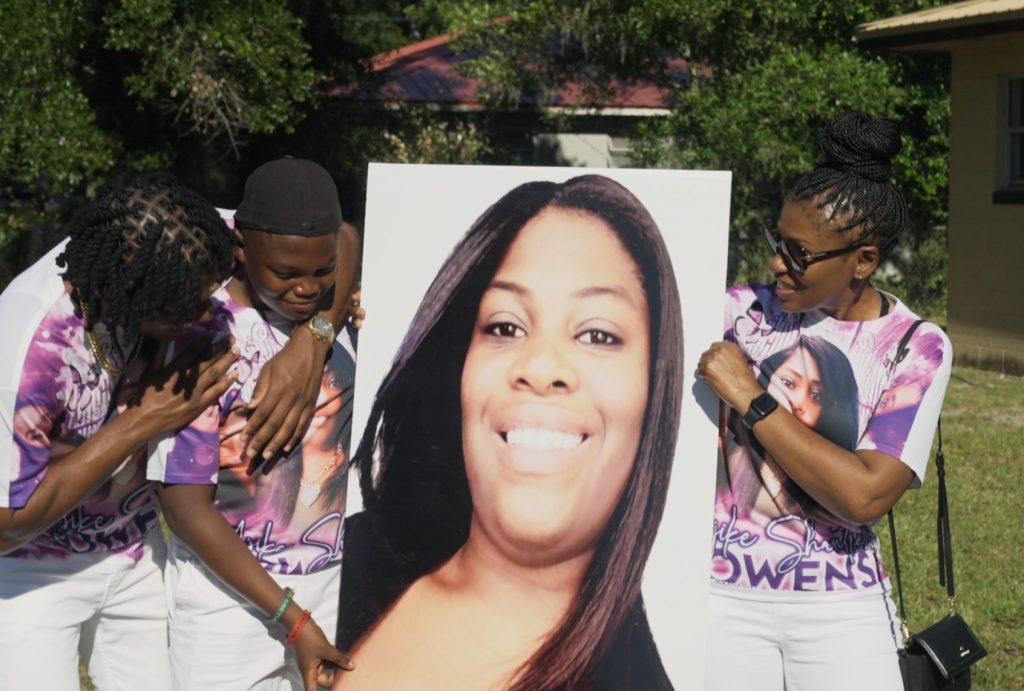The Perfect Neighbor: A Haunting True Crime Documentary
In the Netflix documentary, “The Perfect Neighbor,” the ongoing conflict between Susan Lorincz and her Ocala, Florida neighbors takes center stage, as captured through the eyes of an unexpected observer: eight-year-old Afrika Owens. Afrika’s mother, Ajike “AJ” Owens, let Afrika and her brothers, Israel and Isaac, join other local children playing in a field next to Lorincz’s rental unit. Despite no proof, Lorincz frequently called the police, alleging the kids were loud and “trespassing,” a term she would use repeatedly. When police questioned Afrika during one visit, she remarked, “The kids are just playing around here, and she comes out here talking smack,” while an older child chimed in, “We’re not even… we’re 11!”
This age distinction between the children and 58-year-old Lorincz is crucial in Geeta Gandbhir’s documentary, executive produced by Soledad O’Brien, which gained acclaim at the recent Sundance Film Festival before Netflix acquired it. “The Perfect Neighbor” primarily utilizes police bodycam footage to chronicle the escalating tensions over several months. The children, confused and distressed, are unfairly targeted for simply being kids. The film poignantly highlights the injustice they face, culminating in a harrowing incident on June 2, 2023, when Ajike was shot after approaching Lorincz’s home, ultimately succumbing to her injuries.
Captured Trauma and Its Effects
Once the police arrive, the bodycam recordings capture the immediate aftermath of the tragedy, revealing a neighborhood in turmoil. While the footage effectively conveys the gravity of the situation, it also gives “The Perfect Neighbor” a grating tone. Gandbhir does not shy away from documenting the unfolding trauma, yet her heavy-handed approach risks overshadowing the film’s urgent message. As the children grapple with the death of their mother amidst escalating tensions, viewers are faced with a mix of their guilt, fear, and regret. The portrayal of such raw emotion raises questions about the ethical implications of showcasing a victim’s agony for entertainment.
While “The Perfect Neighbor” stands out as a compelling example of true crime cinema, its impact is compromised by the intense trauma depicted. Gandbhir opts for bodycam footage and security videos over interviews with the Owens family or local community members, engaging audiences without unnecessary embellishments. This choice distinguishes the film from other true crime offerings that often lack the same level of finesse.
The Risk of Exploitation
However, even a refined documentary can succumb to the pitfalls of the genre. As true crime’s popularity grows, audiences have become desensitized to graphic visuals. The emergence of graphic imagery may detract from the viewer’s experience, especially given Netflix’s previous sensationalized true crime stories. While not indicative of the quality of “The Perfect Neighbor,” the platform’s history raises caution regarding the documentary’s reception, as inappropriate headlines circulate about the grieving children, transforming a sensitive incident into clickbait.
In the immediate aftermath of Ajike’s death, chaos engulfs the quiet Ocala street. Surveillance footage shows her son Isaac in distress, urgently asking for emergency assistance. The scene is heart-wrenching, showing children facing an unspeakable loss, revealing the raw pain as they learn about their mother’s passing. Although Gandbhir’s intention is not to exploit their suffering, the emotional intensity risks crossing a line into sensationalism.
A Balancing Act of Empathy and Responsiveness
The gut-wrenching moment when the children’s father conveys the news of their mother’s death marks a critical turning point in the documentary. Their emotional breakdown underscores the gravity of the situation, illustrating the weight of loss borne by children who must now navigate life without their mother. Although Gandbhir captures this moment to emphasize systemic issues like “stand your ground” laws, one must ponder the ethical dilemmas of such portrayals in real-time.
The challenge lies in the extensive true crime genre, where finding a moral balance is complex. As “The Perfect Neighbor” reaches its conclusion, the film’s empathetic tone begins to falter, becoming more focused on advocating against harmful laws. The result is a potent but ultimately burdensome depiction of tragedy that raises essential questions about the responsibilities of filmmakers when navigating sensitive subjects.



